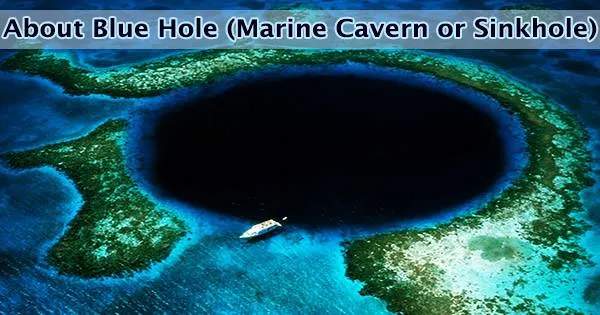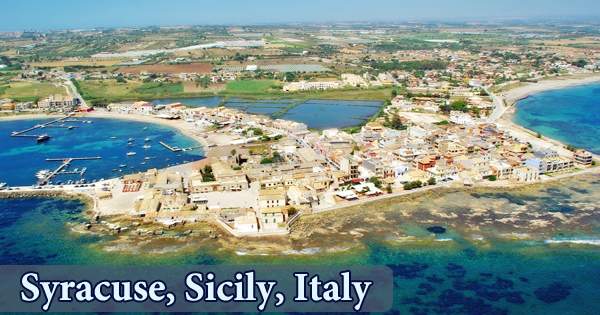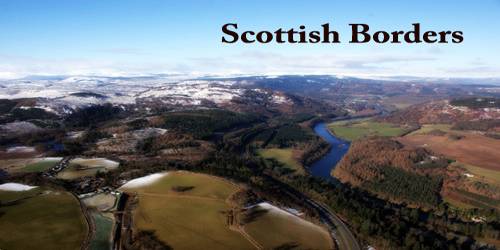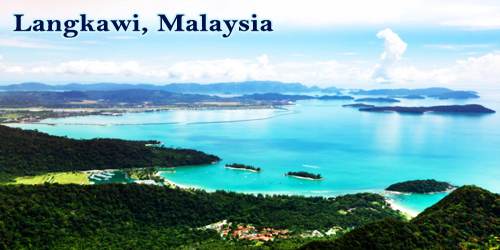A blue hole is a natural geological formation similar to a sinkhole, but it is typically found underwater in the ocean or a body of water. It is a large marine cavern or sinkhole, which is open to the surface and has developed in a bank or island composed of a carbonate bedrock (limestone or coral reef).
Blue holes typically contain tidally influenced water of fresh, marine, or mixed chemistry. Blue holes are characterized by their deep, dark blue color, which is in contrast to the lighter blue of the surrounding water. These formations are called “blue holes” due to the distinct coloration they exhibit.
Blue holes are roughly circular, steep-walled depressions, and so named for the dramatic contrast between the dark blue, deep waters of their depths and the lighter blue of the shallows around them. Well-known examples are the Dragon Hole (in the South China Sea) and, in the Caribbean, the Great Blue Hole and Dean’s Blue Hole.
Key features of blue holes include:
- Depth: Blue holes can be extremely deep, often exceeding 100 meters (330 feet) and sometimes reaching several hundred meters in depth. The depth is a result of various geological processes, including the dissolution of limestone or other soluble rock formations.
- Formation: Blue holes are usually formed through a combination of erosion, sea-level changes, and chemical processes. Initially, they may start as sinkholes on land, but as sea levels rise or the land subsides, they become submerged.
- Unique Ecosystems: Blue holes are often home to unique and diverse ecosystems, including a variety of marine life adapted to the extreme conditions of the deep, dark environment. Some blue holes are known for their crystal-clear water and the absence of strong currents.
- Exploration: Blue holes have fascinated scientists and divers for many years. They provide opportunities for scientific research and exploration, offering insights into geology, marine biology, and even climate change.
- Famous Examples: One of the most famous blue holes in the world is the Great Blue Hole in Belize, which is a UNESCO World Heritage Site and a popular destination for divers. Dean’s Blue Hole in the Bahamas is another well-known example.
Blue holes are distinguished from cenotes in that the latter are inland voids usually containing fresh groundwater rather than seawater. The deepest blue hole in the world at 300.89 meters (987 feet) deep is in the South China Sea and is named the Dragon Hole, or Longdong. The second deepest blue hole in the world with underwater entrance at 202 metres (663 ft) is Dean’s Blue Hole, located in a bay west of Clarence Town on Long Island, Bahamas.
Other blue holes are about half that depth at around 100–120 metres (330–390 ft). The diameter of the top entrance ranges typically from 25–35 metres (82–115 ft) (Dean’s Blue Hole) to 300 metres (980 ft) (Great Blue Hole in Belize).
Due to the conditions of a blue hole, they are forced to live off of sulfur compounds like hydrogen sulfide, which are toxic to most organisms. Diving into blue holes is a popular activity for experienced divers, but it can be dangerous due to the extreme depths and the potential for nitrogen narcosis, which can occur at significant depths.
Exploring blue holes requires careful planning and the use of specialized equipment and techniques. The overall largest blue hole (taking into account depth and width) is located 100 kilometers from the coast of Belize. The Great Blue Hole is a massive 300 meters wide and 125 meters deep.
Blue holes are the cumulative result of carbonate deposition and dissolution cycles which have been controlled by Quaternary glacioeustatic fluctuations of sea-level. Many different fossils have been discovered that indicate the type of life forms that existed in blue holes. Other life forms such as marine life and marine fossils have also been noticed; crocodile and tortoise fossils, for instance, have been found in blue holes.
Blue holes have a great diversity of microbes. They create biogeochemical pathways creating a unique and diverse environment within the blue holes. Blue holes are found in two settings: ocean holes open directly into the present marine environment and usually contain marine water with tidal flow; inland blue holes are isolated by present topography from surface marine conditions, and open directly onto the land surface or into an isolated pond or lake, and contain tidally-influenced water of a variety of chemistries from fresh to marine.
A blue hole is a unique geological formation found underwater, known for its deep, dark blue color and the intriguing ecosystems it hosts. These formations offer opportunities for scientific study and underwater exploration, but they should be approached with caution by divers due to their depth and associated risks.
















